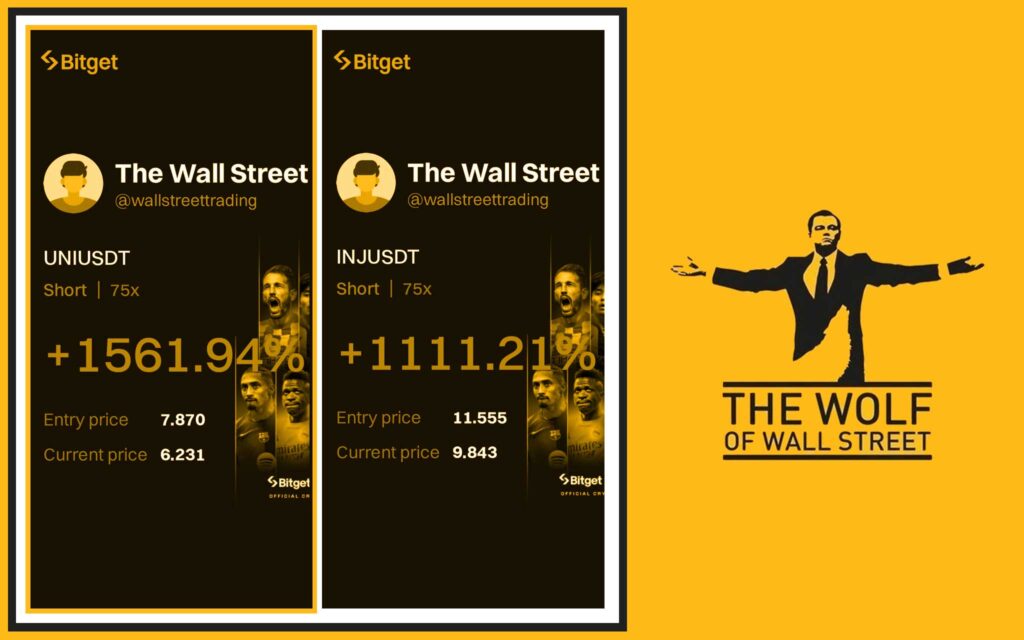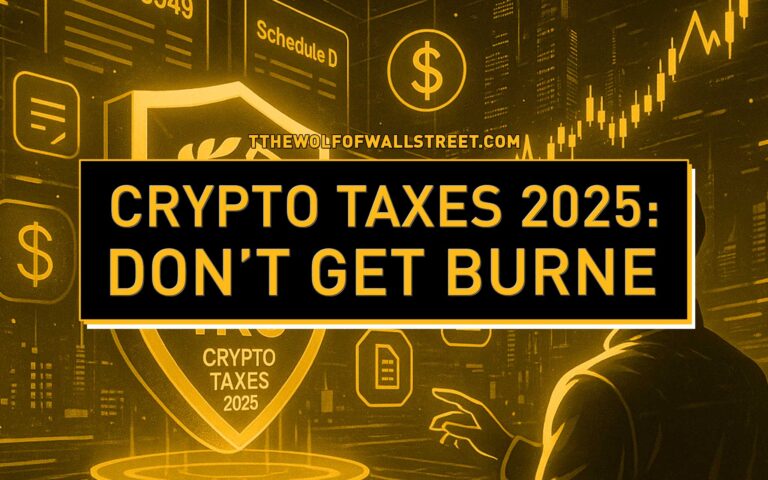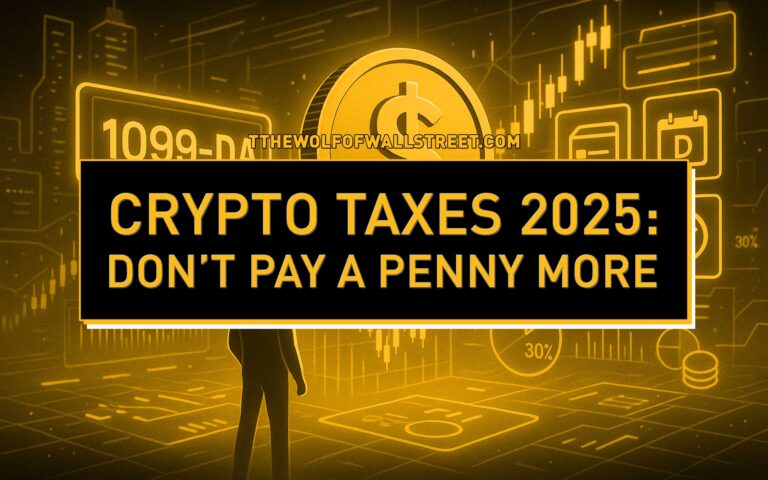🔥 Introduction: The Seed That Sparked a Multi-Trillion Dollar Market
Before Bitcoin, before Ethereum, before the entire trillion-dollar crypto market existed—there was B-Money. This wasn’t just an idea scribbled down in a notebook. It was a bold, radical proposal from computer scientist Wei Dai back in 1998. His vision? A form of anonymous, distributed digital cash that cut governments, banks, and middlemen out of the equation.

Sounds familiar, doesn’t it? That’s because B-Money was the blueprint. The genesis spark that paved the way for Bitcoin and everything that followed. But here’s the kicker—it never launched. And that’s why most people haven’t even heard of it.
Let’s break it down and see why B-Money was way ahead of its time, why it failed, and what it means for traders and investors today.
💡 What Is B-Money?
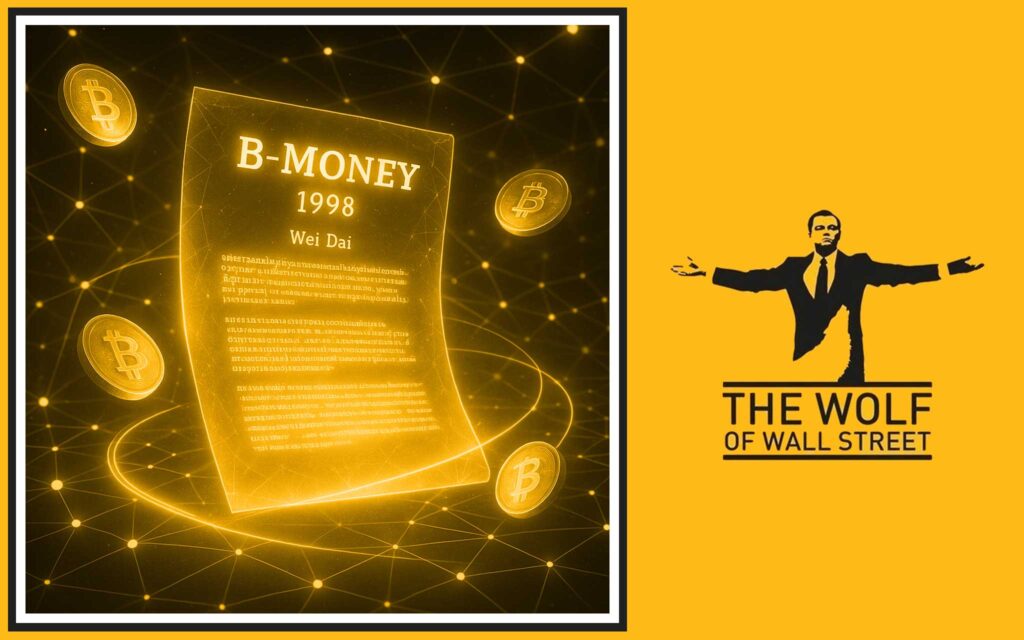
B-Money was an early cryptocurrency concept that proposed a peer-to-peer electronic cash system. Imagine this: no banks, no governments, no middlemen—just pure digital exchange between individuals.
Wei Dai’s goal was simple yet revolutionary: create a financial system based on cryptography instead of trust. Money that you could send across the world without permission, without censorship, and without leaving a trace.
This was 1998. Google had barely been founded. The internet was still dial-up. And Dai was already sketching out the foundations of what we now call cryptocurrencies.
🌍 The Vision Behind B-Money
Wei Dai wasn’t just thinking about money. He was thinking about freedom. His vision was for a society where individuals could transact, make contracts, and build wealth without government enforcement or fear of violence.
This was straight out of the cypherpunk movement, where privacy, autonomy, and decentralisation were the holy grail. B-Money was designed to protect identities, prevent government overreach, and allow people to operate in a trustless economy.
In Dai’s words, this system would create a community built on cooperation rather than coercion. Sound familiar? That’s the DNA of Bitcoin, Ethereum, and DeFi today.
⚙️ How B-Money Worked
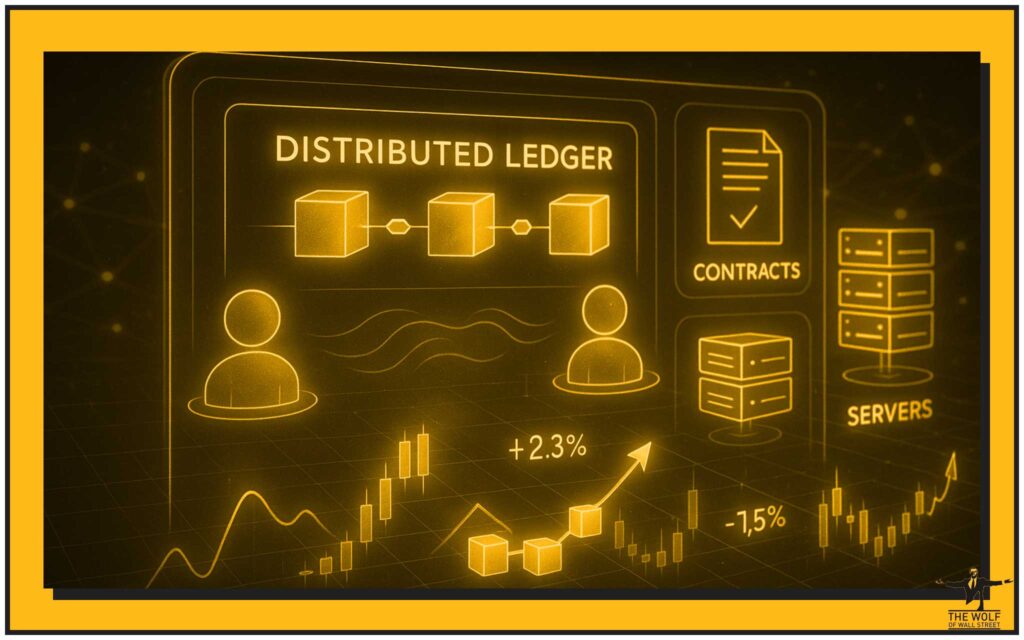
Dai proposed two models for how B-Money could work:
- The First Proposal (Impractical but Revolutionary):
- Everyone keeps a ledger of transactions.
- New money is created by solving computational problems.
- Transfers are broadcast to the entire network for verification.
- The Second Proposal (Closer to Modern Blockchain):
- A group of servers (think miners) keep the ledger.
- They verify transactions, balances, and contract executions.
- Users rely on cryptography for trust, not governments.
B-Money also introduced:
- Proof-of-work (years before Bitcoin)
- Digital signatures & public keys for transaction security
- Community consensus for verifying money supply
This was the skeleton of blockchain technology, sketched out a full decade before Bitcoin went live.
💰 Comparing B-Money to Bitcoin
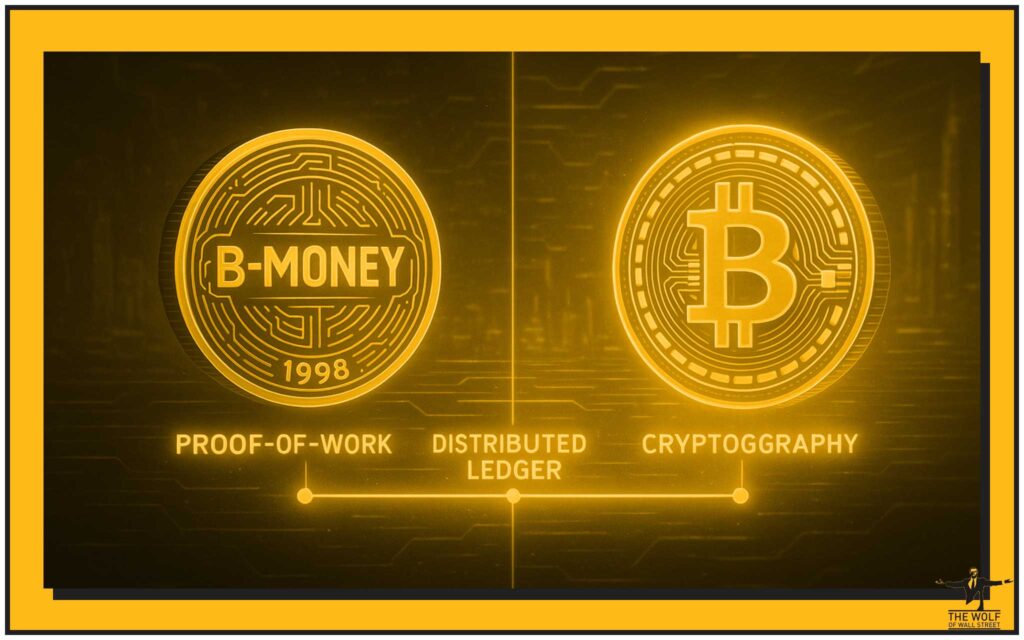
So how does B-Money stack up against the king of crypto, Bitcoin?
Similarities:
- Proof-of-work concept
- Distributed ledger
- Use of cryptography for trustless transactions
Differences:
- B-Money was purely theoretical—it never got off the ground.
- Bitcoin implemented these ideas with real-world code, incentives, and a functioning community.
Fun fact: Satoshi Nakamoto actually contacted Wei Dai during the creation of Bitcoin. Dai, however, believes Satoshi reinvented the concept independently.
👉 For more on Satoshi’s enigmatic role, check out Satoshi Nakamoto’s mystery.
🔐 Technical Breakthroughs
B-Money wasn’t just about money—it was about technology.
- Digital Signatures → Allowed contracts and transactions to be enforced without courts or governments.
- Public & Private Keys → Created the security backbone of wallets and addresses.
- Community-Ledgers → The seed of blockchain consensus.
This tech lives on in today’s crypto world. Want to understand how your wallet works? Read our guide to public vs. private keys.
🚫 Why B-Money Never Took Off
So why didn’t B-Money succeed?
- Too complex for the time – The internet in 1998 wasn’t ready for decentralised money.
- No adoption – Without developers and users, it stayed a concept.
- Scalability issues – The proposals had big flaws when it came to efficiency.
It was the right idea at the wrong time.
🎯 The Goals of B-Money: More Than Just Money
Wei Dai wasn’t just creating money. He was proposing a new type of society:
- Privacy-preserving contracts
- Peer-to-peer wealth exchange
- Decentralised enforcement without violence or governments
This was cypherpunk thinking at its finest. To dig deeper, check out the cypherpunk crypto revolution.
🚀 Influence on Modern Cryptocurrencies
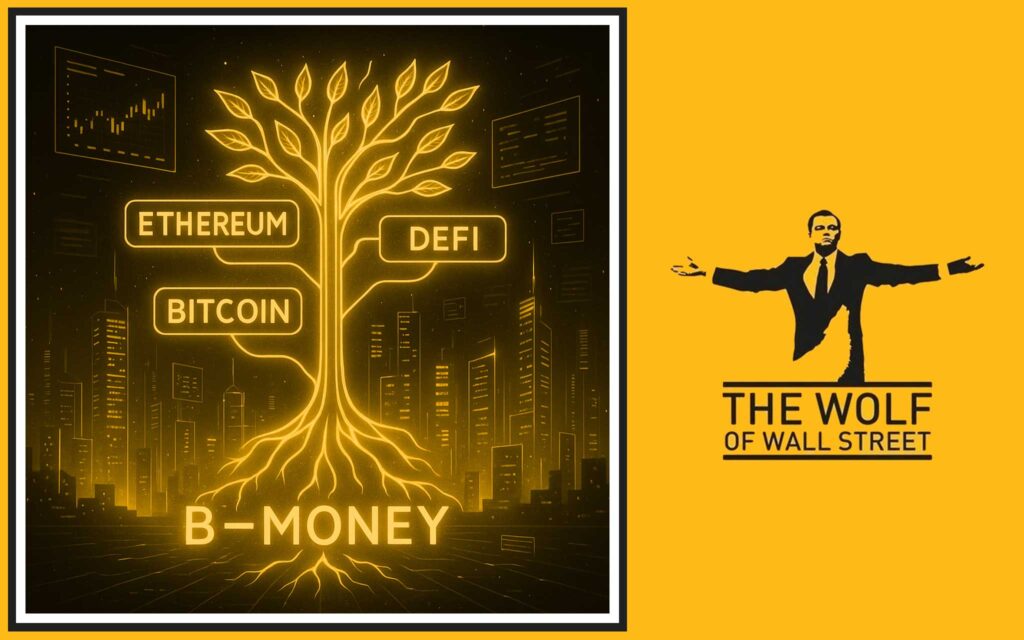
Even though it never launched, B-Money left fingerprints all over the crypto industry:
- Bitcoin → Realised Dai’s vision with working code.
- Ethereum → Honoured Dai by naming its smallest unit “wei.”
- Smart Contracts → Echo Dai’s contract enforcement ideas.
- DeFi → Community-led finance exactly as Dai imagined.
Read more on the future of DeFi ecosystems.
⚖️ B-Money vs. Government and Regulation
Dai envisioned a world where governments couldn’t touch your money. Fast forward to today: regulators are playing catch-up.
- KYC, AML laws aim to control anonymity.
- Privacy-focused coins face bans and delistings.
- The B-Money dream lives on, but it constantly clashes with regulators.
For today’s traders, compliance is key. Learn more with our crypto AML guide.
📜 B-Money’s Place in Crypto History
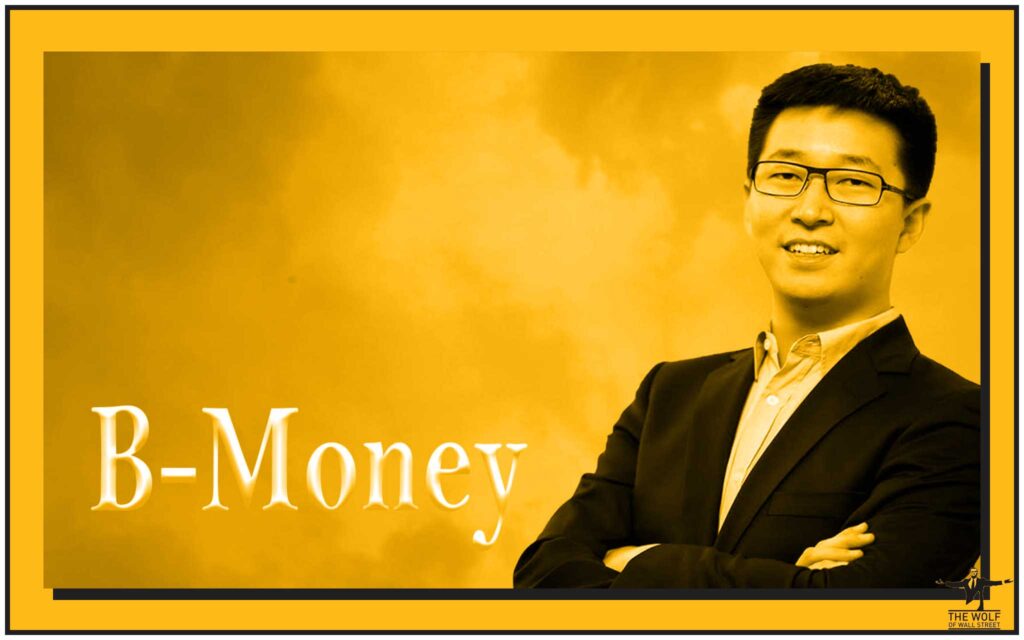
While overshadowed by Bitcoin, B-Money remains a foundational piece of crypto history:
- The first clear vision of decentralised digital cash.
- Direct influence on Bitcoin’s design.
- Eternal recognition via Ethereum’s “wei.”
It’s the unsung hero of the crypto revolution.
🤔 What If B-Money Had Launched?
Let’s imagine: if B-Money had launched in 1998—before the dot-com bubble—what would have happened?
- Could it have changed the course of internet finance?
- Would banks have been disrupted earlier?
- Could crypto have become mainstream a decade sooner?
The possibilities are endless, but one thing is clear: Dai was ahead of his time.
📈 Lessons for Traders Today

Here’s the real takeaway: don’t ignore early signals. Big revolutions start as tiny ideas.
- Bitcoin looked like a joke in 2009—today it’s a global asset.
- Ethereum looked like a nerd’s dream—today it powers DeFi.
- The next “B-Money” is probably being written in some obscure whitepaper right now.
If you’re a trader, you can’t afford to miss it. And that’s exactly where The Wolf Of Wall Street comes in.
🛠️ How B-Money Connects to Today’s Tools
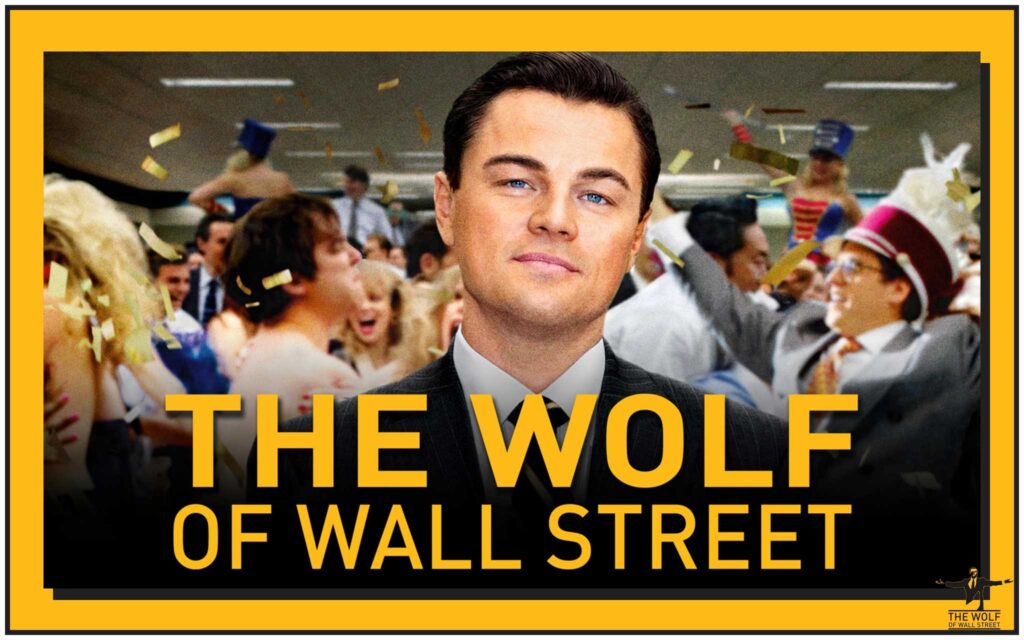
What Wei Dai imagined is alive today:
- Decentralised Exchanges (DEXs) → Peer-to-peer trading without banks.
- Automated Trading Bots → Smart execution of strategies.
- Crypto Communities → Shared insights, exactly as Dai envisioned.
This is where The Wolf Of Wall Street crypto trading community delivers:
- Exclusive VIP signals to catch profit opportunities
- Expert market analysis to cut through noise
- Essential trading tools for better decision-making
- A private network of 100,000+ traders
This is the modern embodiment of Dai’s vision in action.
❓ FAQs
Q1: What is B-Money in simple terms?
An early cryptocurrency concept proposing digital cash without banks or governments.
Q2: Did Satoshi copy Wei Dai’s idea?
Satoshi was influenced by Dai but independently implemented Bitcoin.
Q3: Why didn’t B-Money launch?
It was too complex, lacked adoption, and the internet wasn’t ready in 1998.
Q4: How does B-Money impact crypto today?
It inspired Bitcoin, Ethereum, smart contracts, and DeFi systems.
Q5: What can traders learn from B-Money’s story?
That early ideas spark revolutions—and the next one could be unfolding right now.
🔮 Conclusion: From B-Money to Bitcoin to Beyond

B-Money was the spark. Bitcoin became the flame. And today, we’re living in the wildfire of crypto innovation that spreads across the globe.
Wei Dai never launched B-Money, but his ideas are alive in every Bitcoin transaction, every Ethereum smart contract, every DeFi protocol.
For traders, the lesson is clear: opportunity comes to those who see it early and act decisively. Don’t wait for the next revolution to pass you by. Arm yourself with the right tools, the right signals, and the right community.
👉 Learn more at The Wolf Of Wall Street and join the Telegram community to stay ahead of the game.
The Wolf Of Wall Street crypto trading community offers a comprehensive platform for navigating the volatile cryptocurrency market. Here’s what you gain:
- Exclusive VIP Signals: Access proprietary signals designed to maximize trading profits.
- Expert Market Analysis: Benefit from in-depth analysis from seasoned crypto traders.
- Private Community: Join a network of over 100,000 like-minded individuals for shared insights and support.
- Essential Trading Tools: Utilize volume calculators and other resources to make informed decisions.
- 24/7 Support: Receive continuous assistance from our dedicated support team.
Empower your crypto trading journey:
- Visit our service: https://tthewolfofwallstreet.com/service for detailed information.
- Join our active Telegram community: https://t.me/tthewolfofwallstreet for real-time updates and discussions.
- Unlock your potential to profit in the crypto market with The Wolf Of Wall Street.

